Review: MacGourmet Deluxe
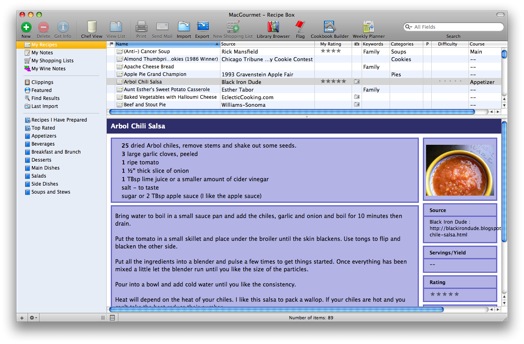
Click on image above for larger view.
Recipe database programs have been around in one form or another as long as personal computers have been in homes. Some of these are standalone programs dedicated to recipes, but even standard database programs such as FileMaker Pro come with recipe templates. I’ve been using personal computers since 1982, and I’ve kept recipes saved electronically (in word processing documents or PDF files) since the first computer we had with a hard drive, way back in 1988. But I’ve never been impressed with recipe database software...until now.
Now, let me say up front: yes, you can see a MacGourmet Deluxe (MGD from this point forward) advertisement in the sidebar [only at cookingincastiron.com, not at This Lamp]. But what you must realize is that I first contacted Mariner Software in regard to their advertising with us because I was incredibly impressed with this software. In fact, as I already mentioned, recipe database software is nothing new, but in reality, MGD seems to me to be the mature end result of nearly three decades of this kind of software that has gone before it. I strongly encourage you to download the MGD user manual as I will not be able to nearly touch upon all of MGD’s features in this review. I’ve jokingly said to a friend that MGD seems to do everything except cook the meal for you, but maybe that’s projected for version 2.0.
Of course, MGD does what you would expect--it allows you to keep a database of your recipes. The interface is iTunes-esque, allowing you to create your own categories in the left sidebar. And like an iTunes smart playlist that automatically expands as new songs meet pre-set criteria, MGD allows the user to create “smart recipe lists” that look for certain criteria as the user adds new recipes.
One of the most impressive features of MGD is the multiple ways that recipes can be added to the database. Certainly, the user can enter ingredients and directions manually, but there are also a number of ways to add them automatically from other sources. There are “supported” websites such as allrecipes.com, epicurious.com, foodnetwork.com, williams-sonoma.com, cookinglight.com and food.yahoo.com in which all a user has to do is select the URL on a recipe’s webpage, go to the services menu: MaGourmet, and choose “Import Recipe from Web Page.” 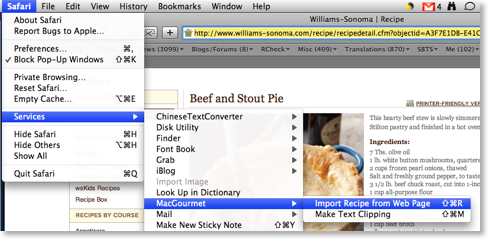
MGD automatically parses the information, separating the ingredients from the directions, the description of the recipe and even includes the picture: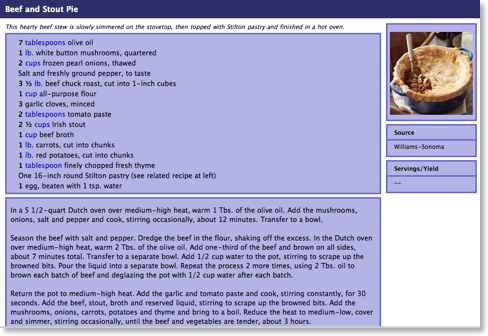
But what if a website is not supported? Well, to test this out, I went to one of my favorite cast iron related websites, “Black Iron Dude.” About a month ago, there was a recipe at this website for Arbol Chile Salsa. To import the recipe from Greg’s website, I first highlighted all the text in his post and then I dragged it to the “Clippings” window in MGD. This is a great little window in MGD that allows the user to drag over recipe after recipe and then go back and format them later. After I had dragged over the text for the salsa, I double-clicked on it to import it in my recipe database. 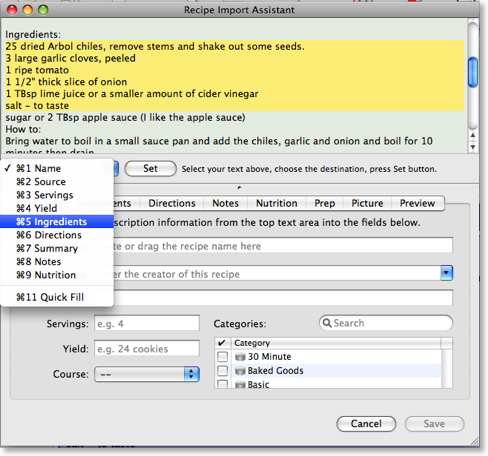
All of my captured text is gathered at the top of the import window. From the drop down menu, I can select “Ingredients” and MGD knows that this information is separate from the preparation directions. And of course, I can do the same with the directions, information about the recipe, etc.
What impressed me further is that in parsing the list of ingredients, MGD could distinguish between number, actual item and special instructions. Notice for example in the list below, taken from this recipe, that “25” is separated from “dried Arbol chiles” which is separated from “remove stems and shake out some seeds”: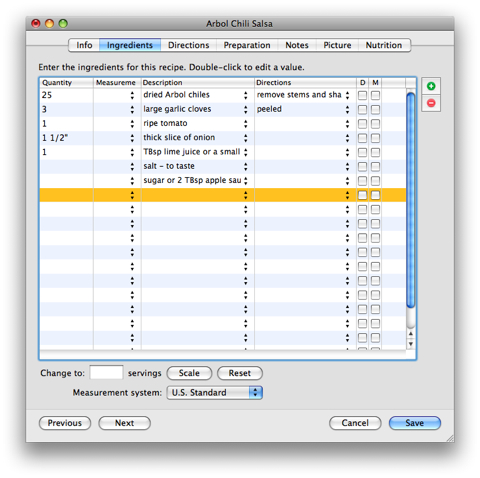
For those watching what they eat (and who isn’t these days?) MGD comes with the abbreviated USDA National Nutrient Database. Ingredients are automatically evaluated by this database and if MGD is unsure about a particular ingredient, the user can open up the USDA database and manually map ingredients. Once all ingredients are mapped and servings are figured, MGD calculates an extremely accurate breakdown of nutritional data.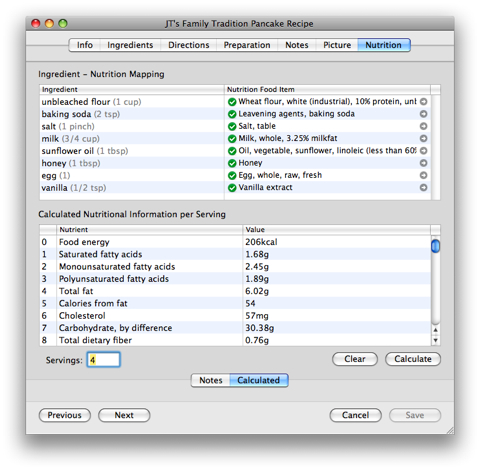
This information is calculated for 45 separate items: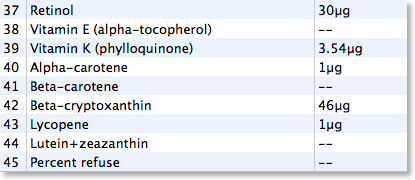
And when printing out recipes for personal use or to share an abbreviated box with nutritional information is included such as this breakdown for JT’s Family Pancake Recipe: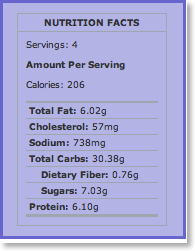
This kind of information would be extremely helpful not only for the person watching what he or she eats, but also for the personal chef or any person in charge of providing meals for groups of people. MGD includes a weekly meal planner that can be exported to iCal, and shopping lists can be created from planned recipes.
Kathy and I have an older iMac we keep in the kitchen for easy access to recipes we’ve collected electronically over the years. Whether you have a dedicated kitchen computer or simply a laptop on the counter, MGD offers a “Chef’s View” that enlarges ingredients and directions for easy access: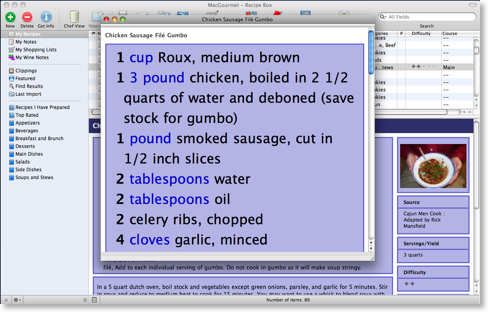
Almost every church group or civic organization has produced a cookbook at one time or another. There are publishers who specialize in this. These publishers should be a bit concerned for their future because MGD includes tools for creating one’s own cookbook with pictures, section dividers, chapters, and more. Once a cookbook has been created it can be exported to PDF ready for publication from a company such as Lulu.com.
And of course, when someone asks you for your Garlic Beef Enchiladas recipe after the church potluck, you can print out your recipe according to a variety of attractive built in templates.
As the name implies, MacGourmet Deluxe only runs on Macintosh computers, but the program is so sophisticated, it might be reason enough to switch from Windows if you aren’t already a Mac user. Regardless, MGD can import files in a number of formats: MasterCook, MasterCook Mac, Meal-Master, CookWare Deluxe, Cook’n text, RecipeML, and Yum XML. It can export to iPod notes, MasterCook, MealMaster, RTF and text files.
Our Cooking in Cast Iron website is still fairly new, but as we add recipes in the future, we will also make them available in MGD format which means that if you want to add one of them to your own collection, it will be as easy as dragging an icon from our website directly into your MGD database.
MacGourmet Deluxe is available from Mariner Software for $44.95.









